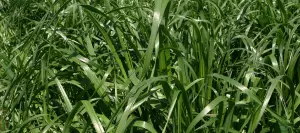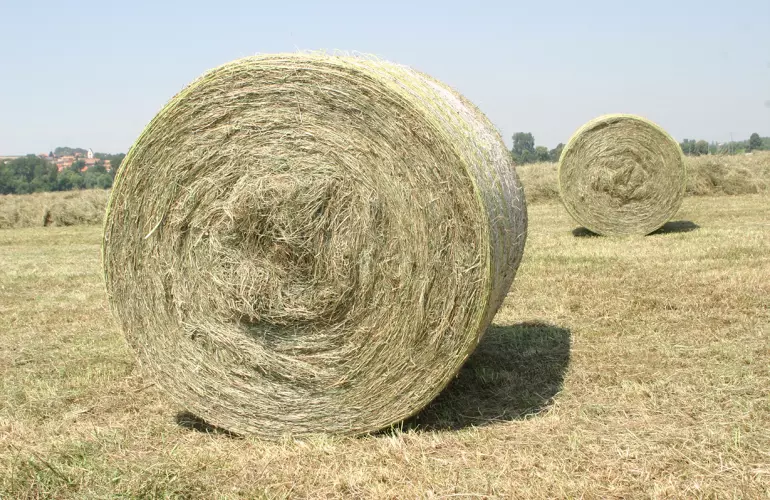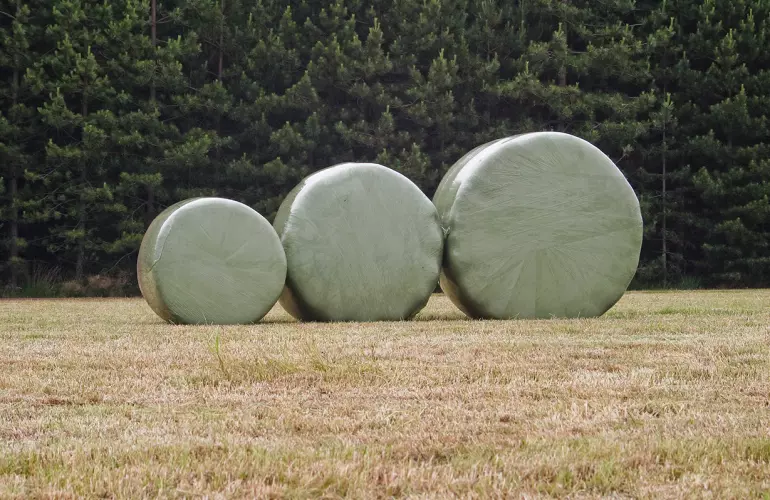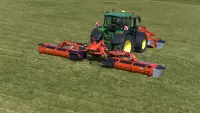Simply great forage - High Palatability
A high feed intake value is the lynchpin for efficient and successful milk/meat production, especially for high-performance dairy cows, as it plays an important role in providing enough energy and nutrients. The feed intake is determined by the palatability of the forage, meaning its “tastiness”. In this respect, cows are no different to humans!

Feed intake and energy content
The feed intake positively correlates to the forage´s energy and nutrient content. Energy and nutrient-rich forage indicates young plants, high digestibility and a good conservation.
The figure shows the impact of differing energy contents in grass silage upon the feed intake and the maximum milk production. In this calculated example, the milk production increases by approximately 15 kg ECM/cow/day, if the energy content of the grass silage, combined with a higher feed intake, rises from 5.4 to 6.6 MJ NEL/kg DM.
Source: Barenbrug (opened on 22nd April 2014).

Animals appreciate properly fermented feed
The forage´s palatability is also directly affected by unpleasant smells and tastes. These can be caused by mould formation, faulty fermentation or heat generation. Therefore, particular attention has to be paid to the dry matter content, fermentation quality and aerobic silage stability. Additionally, the correct crop composition, as there may be plant species present which deteriorate the palatability of the forage, or are even toxic to the animals.
The impact of dry matter content and the forage fermentation upon the feed intake is illustrated in the table. Whilst the energy content ranges from low to medium and very good, the fermentation quality differs between relatively wet silage with butyric acid, and silage with adequate moisture and no butyric acid. Butyric acid formation is an example of faulty fermentation caused by clostridia. This occurs if the ensiled forage could not wilt sufficiently and was contaminated with too much soil.
The result is clear: Cows prefer dry, well-fermented forage, rich in energy.
| Quality/Energy content | Low | Medium | Very good |
|---|---|---|---|
| Grass silage, DM-content < 25%, rich of butyric acid | 7 | 9 | 11 |
| Grass silage, DM-content > 30%, free of butyric acid | 9 | 12 | 15 |
Source: SPIEKERS, H., H. NUßBAUM u. V. POTTHAST: Erfolgreiche Milchviehfütterung. DLG-Verlag, Frankfurt am Main, 2009
Profitability
The more palatable the forage is, the more the cows will take up. Therefore, increased feed intake and palatability has a strong influence on the profitability of milk and meat production.
Remember: a highly palatable basic ration equals a highly profitable process!
- The more palatable the forage, the higher the feed intake
- More milk / meat from the basic ration
- Reduce us of concentrates
- More profit!
How to achieve?
Having discussed the agronomic context, the topic concerning aspects to monitor to increase feed intake will now be addressed.
Desirable and undesirable species in the forage
Composition is important. For a satisfying feed uptake, it is mandatory to avoid species with low palatability and low feed values, for example velvet grass or tall fescue. Some species are even toxic e.g. meadow saffron or common ragwort. On the other hand, desirable species such as perennial ryegrass and white clover are palatable, rich in nutrients and high in energy, these have to be promoted.
In generally it can be said that young and leafy crops with little fiber content enhance palatability.

Wilting to the correct dry matter content
For hay, it is crucial that the crop is wilted to a dry matter content above 86 %. This is the only way to avoid saprophytes (organisms that feed off dead or decaying matter) on the crop and thus prevent spoilage, which has a negative effect on palatability, feed intake and animal health.
In silage making, a dry matter content between 30 to 40 %* should be envisaged. This range provides the best conditions for successful fermentation. A dry matter content above 30 % is very important in order to avoid nutrient losses through silage effluent, to increase the sugar in the forage, as well as preventing the formation of butyric acid. However, the forage should not get too dry either:
Dry matter contents above 40 % favor crumble losses, heat generation and render the silage less compactible. Heat generation, mainly caused by yeasts after the silo is opened, can lead to energy and nutrient losses.

* Source: SPIEKERS, H., H. NUßBAUM u. V. POTTHAST: Erfolgreiche Milchviehfütterung. DLG-Verlag, Frankfurt am Main, 2009.
Excellent quality of fermentation
An excellent quality of silage fermentation is critical for whether the cows will accept it or not.
This relates to the promotion of lactic bacteria, the producers of lactic acid and important protagonists in the silage making process. Lactic acid provokes a fast and energy-saving reduction of the pH value, which is the most important condition for correct conservation of the forage. To inhibit additional transformation processes and to ensure the anaerobic stability of the silage, the proportion of lactic acid should be above 50 g/kg DM. The ideal pH range (depending on dry matter content) is 4.3 – 4.7*.

Lactic acid is required whilst at the same time increased content of butyric and acetic acid in the silage are completely undesirable. Acetic and butyric acids can cause high energy losses, protein degradation and reduce the silage´s palatability due to unpleasant smell and taste. High-quality silages contain less than 3 g butyric acid per kg DM**.
Small quantities of acetic acid below 20-30 g/kg DM positively affect the aerobic stability of the forage as it helps to avoid the development of yeasts. Higher values, above 30 g/kg DM, lead to high energy losses, less palatable silage and therefore reduced feed intake***.
* Source: U. Wyss (2005): „Beurteilung von Silagen – Merkblatt für die Praxis“. ALP aktuell, Nr. 18, Agroscope.
** Source: W. Stromberger (2013): „Beste Silagen lieber gefressen”. ktn.lko.at.
*** Source: J. Thaysen (2013): „Diese Faktoren beeinträchtigen die Gärqualität“.
Other News

A new way of grouping fodder with the GMD 9530 RV
KUHN introduces the GMD 9530 RV disc mower with an auger grouper, allowing you to mow and deliver a swath in one pass, boosting productivity...
Read
Useful ploughing: a fundamental technique shaping the future of agriculture
Used for thousands of years, the plough has been evolving constantly . As its use now sparks heated and divisive debates, we believe it is e...
Read
The VENTA pneumatic seed drill celebrates its 30th anniversary!
Thirty years ago, the VENTA pneumatic seed drills made their debut in the fields. They made agricultural history by offering a revolutionary...
Read